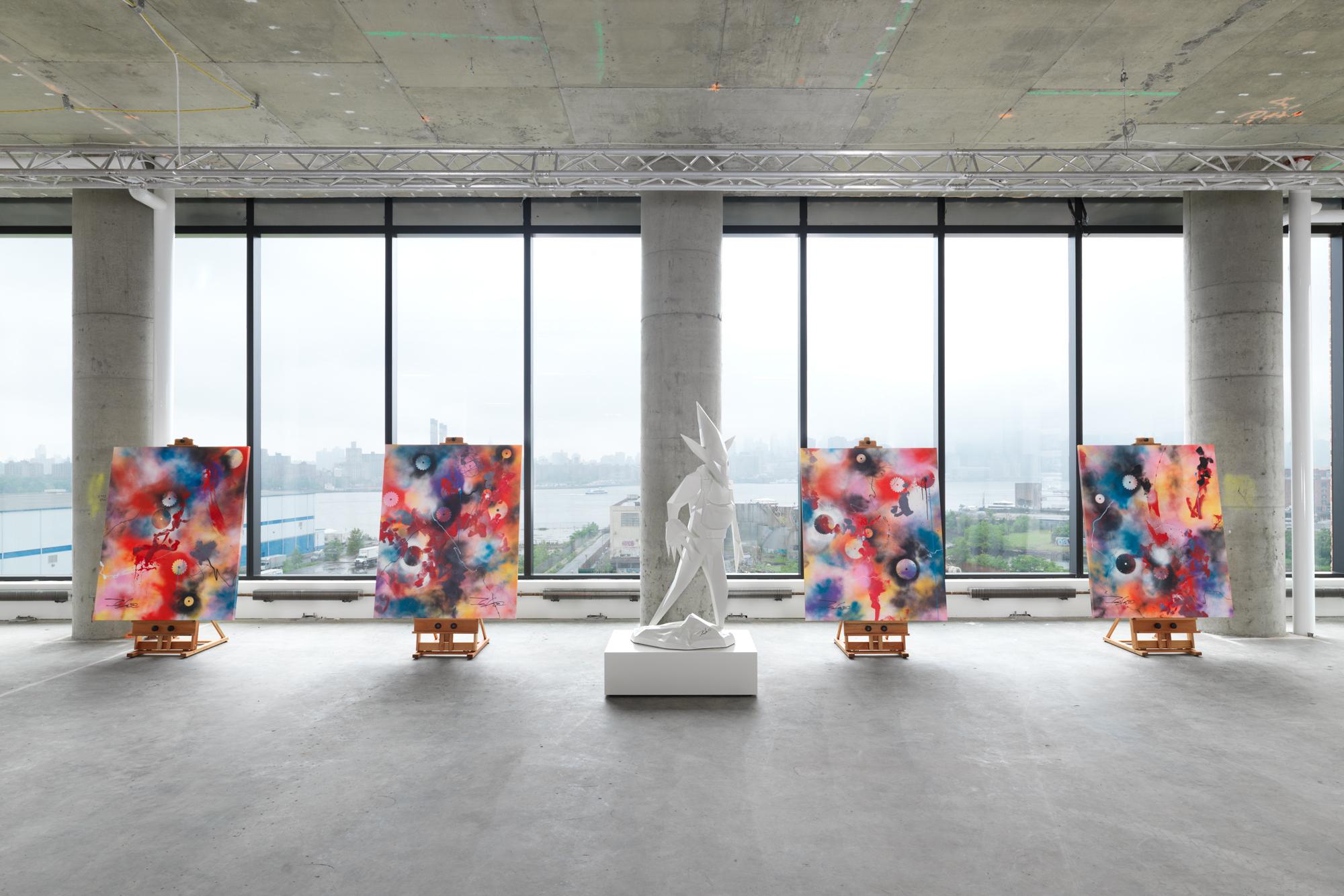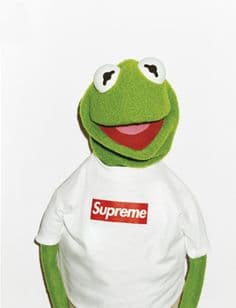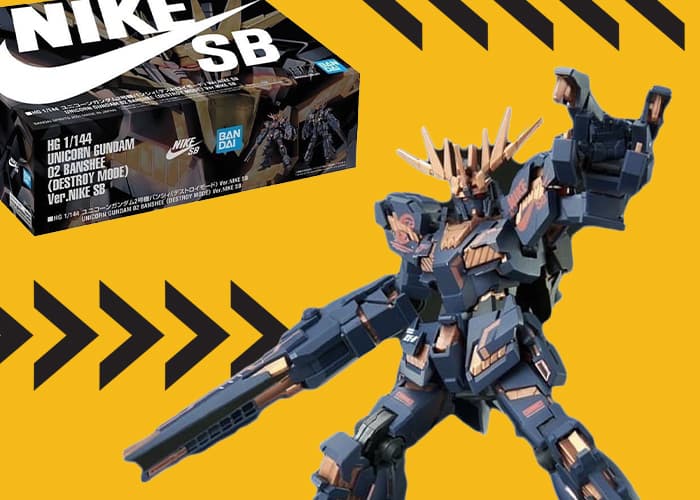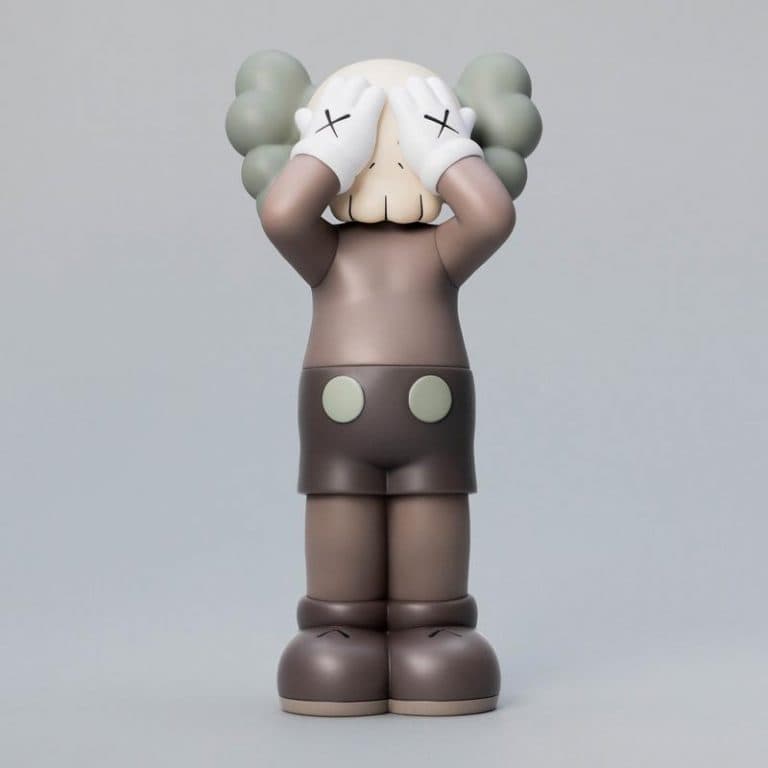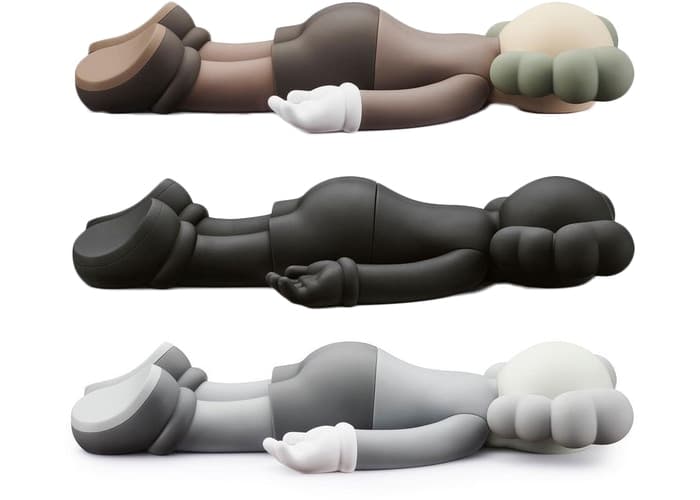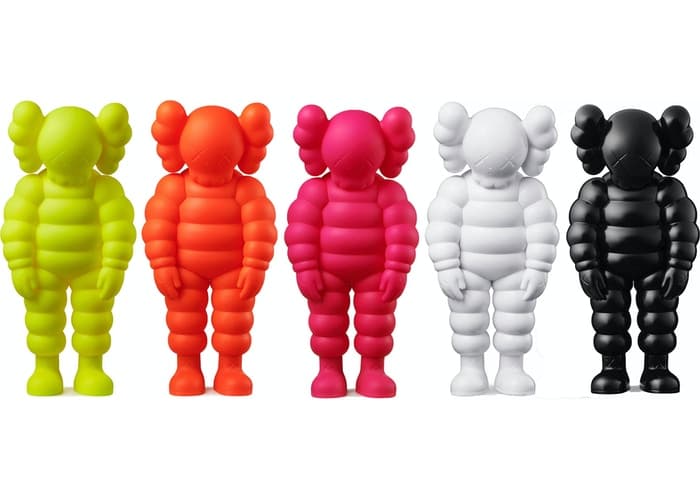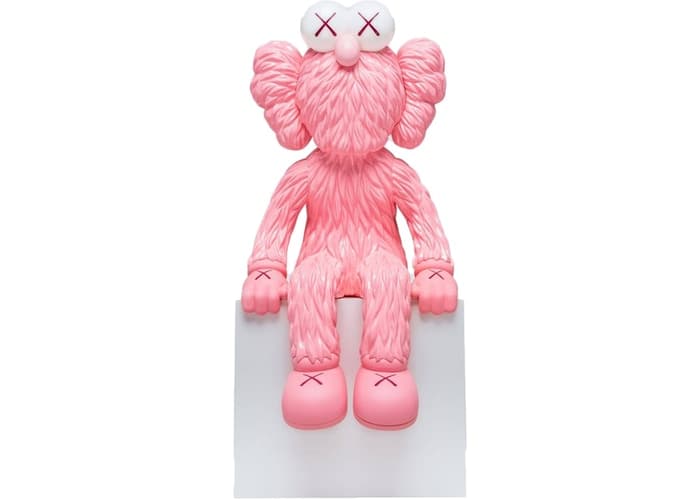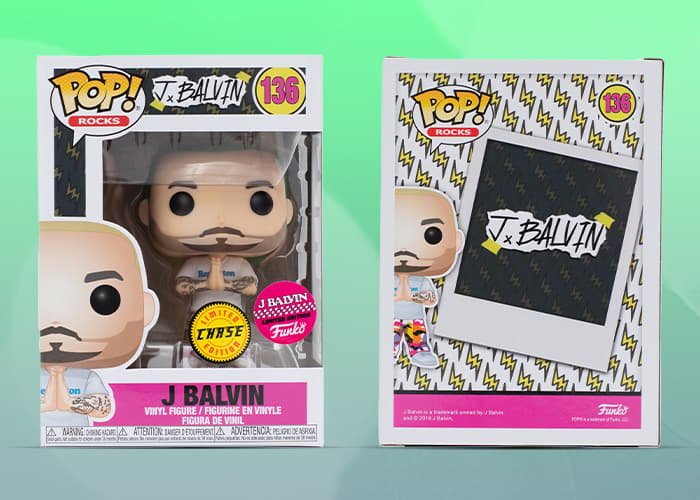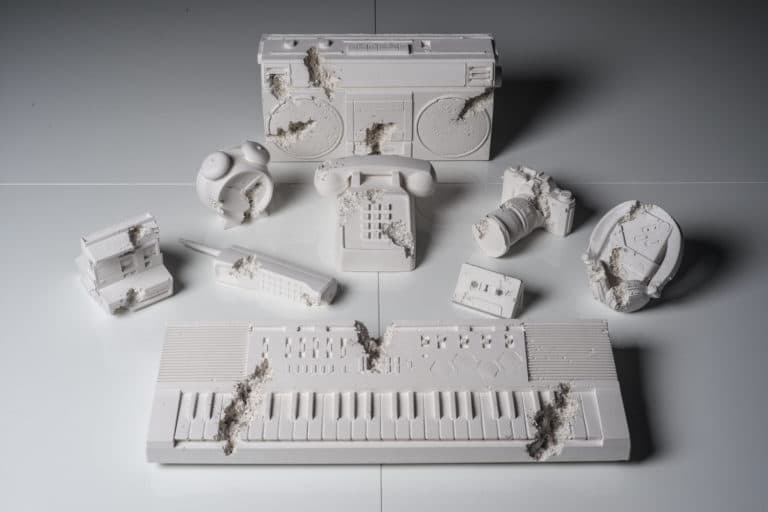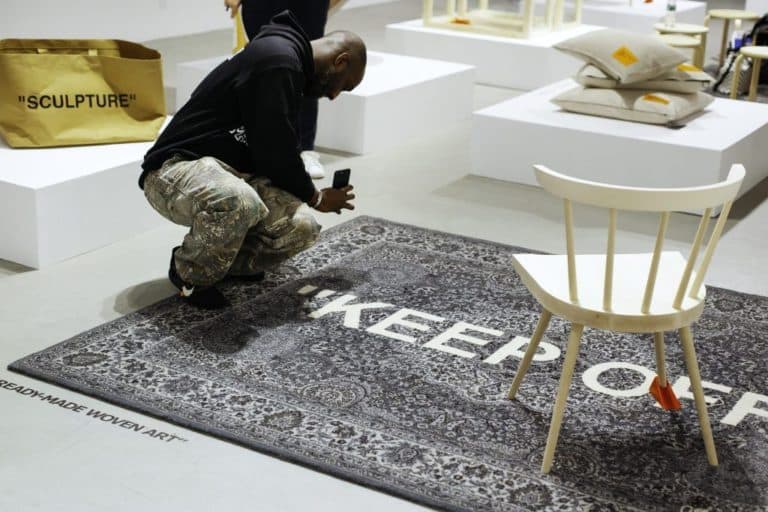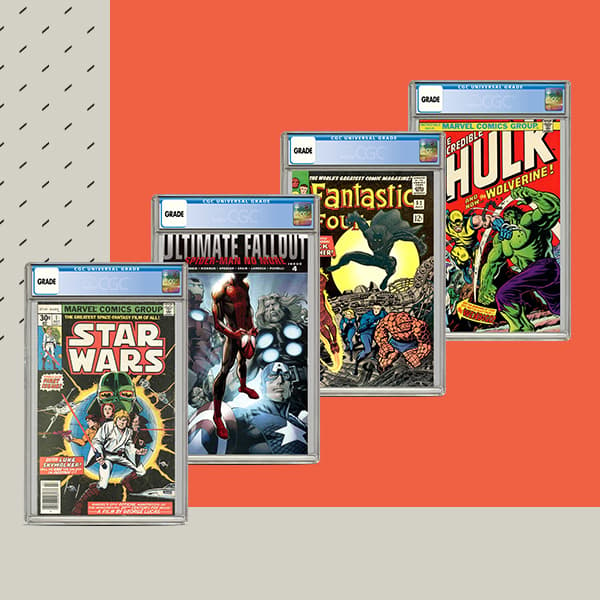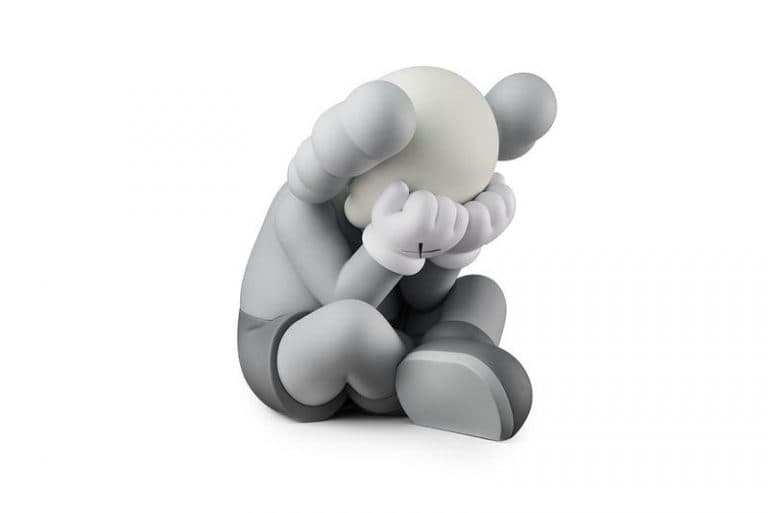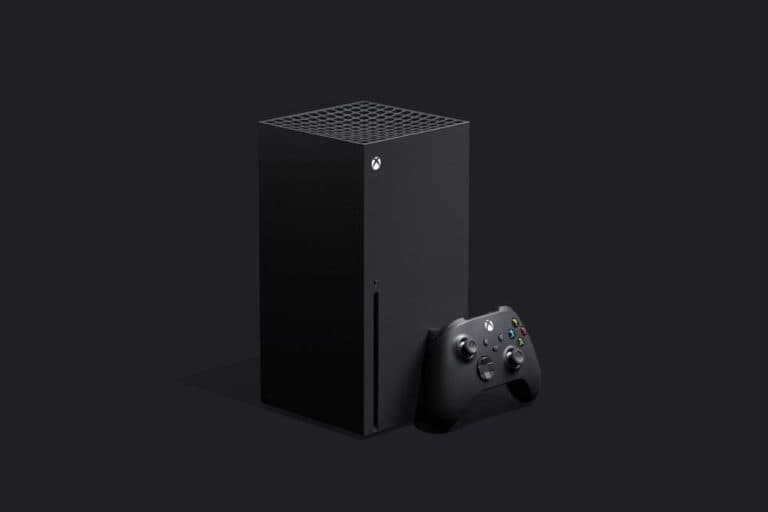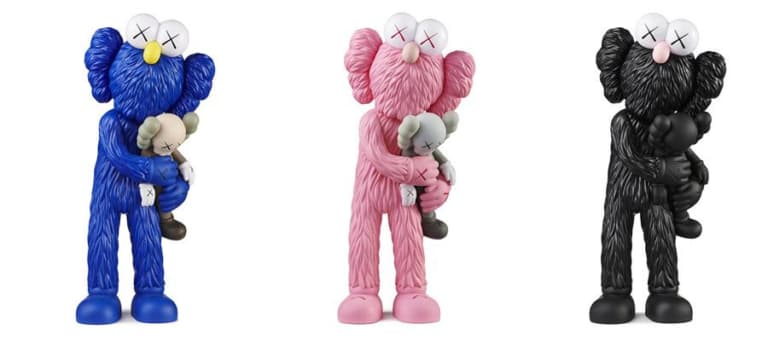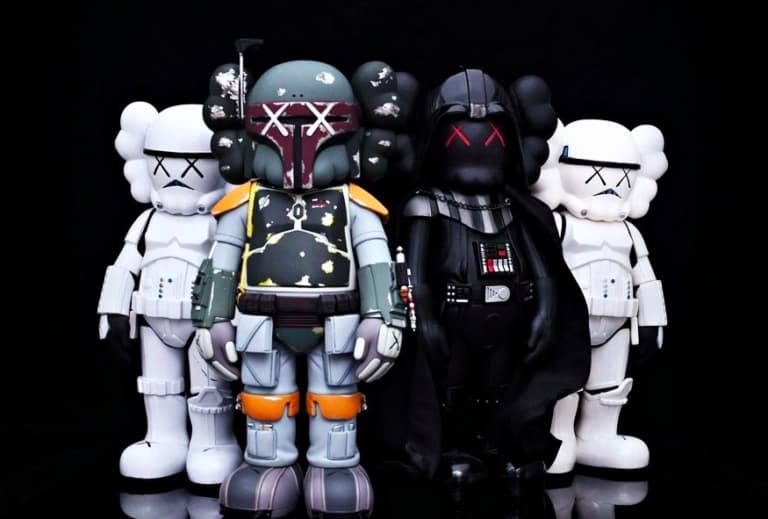“BEYOND THE STREETS” is a sprawling new graffiti and street art exhibition running June 21st, 2019 to August 25th, 2019. “BEYOND THE STREETS” has worked directly with over 150 artists to curate this groundbreaking exhibition in Brooklyn, New York. The exhibition features works from Takashi Murakami, Futura, Mark Gonzalez, Blade, and many more artists.
StockX had the privilege of sitting down with “BEYOND THE STREETS” curator, Roger Gastman, to talk about the exhibition, the current landscape of street art, and where “BEYOND THE STREETS” fits into the sneaker and streetwear communities.
The following interview has been lightly edited for length and clarity.

Works by Sam Friedman // “BEYOND THE STREETS” exhibition // Dan Bradica
StockX: Tell us about how this exhibition came about and the timeline from the initial concept to the opening.
Roger Gastman: “BEYOND THE STREETS” started years ago, and the idea was to put together a show that followed up what we did at MOCA at “Art in The Streets” and how to expand on that show, and make it very clear that the culture of graffiti and street art was here. It’s not going anywhere. We wanted to show how large it had gotten and how many different aspects of culture it had reached, and really make it clear that it is its own culture.
Fortunately and unfortunately, most museums are not interested yet in doing such a massive show that encompasses so much, so we set out to do it on our own. There were a lot of ups and downs and a lot of stops and starts with figuring out how to do it. Luckily, most of the time, all of the artists were just so dedicated and happy to be working with us on the event.
We launched in L.A. a year ago, and the goal was really just to build our own museum. We succeeded, we did it, and it went great. We decided we should go have some more fun with it and put it in New York!

Works by Paul Insect // “BEYOND THE STREETS” exhibition // Dan Bradica
What made you want to bring it to New York as the next stop for the event?
New York is the city that made graffiti famous. We knew the show had to come to New York at some point. After Los Angeles, it was the only choice of stop for it. The trains of the 1970s and 1980s spread the graffiti movement around the world, and we needed to come to New York in a big way.

Works by Tim Conlon // “BEYOND THE STREETS” exhibition // Dan Bradica
What are some of the challenges of working with a roster of over 150 artists? How involved are they in the spaces themselves?
Something that’s important to note for this show is that we work with the artists directly. There are no strange secondary market loans where people aren’t aware that they are in the show and are then surprised in the end. We are making sure everyone is happy, confident, and knows what’s going on. We work with a lot of them to create new works for the show.
Working with all of those artists, of course, has its challenges. Everyone has their own set of ideas. Who’s next to whom and everything like that really, really counts. But in the end, I’ve been involved in this world for a long time and have the knowledge of what makes everyone happy and who fits next to whom and weaving the storylines, it works.

Works by Cleon Peterson // “BEYOND THE STREETS” exhibition // Dan Bradica
Where does “BEYOND THE STREETS” fit within the sneaker and streetwear communities?
Graffiti and street art are massive cultures at this point. Everything that turns into a massive culture becomes used by brands, fashion, music; you name it. It’s great because it spreads the culture in so many different ways. Graffiti and street art are no different. So many artists in the show have done great collaborations and projects with almost every brand you can name. While that work isn’t necessarily shown here, it’s definitely a culture that is recognizable and people and brands clamor for it because it’s what the youth are doing and what the people are paying attention to. Which is so funny because many of these artists are in their 60s, yet they’re still able to reach a youth culture quicker and better than most.

Works by Shepard Fairey // “BEYOND THE STREETS” exhibition // Dan Bradica
It almost seems like it’s the same audience that you see in line at a Nike release or a Supreme drop.
Absolutely. One of the things that makes me the happiest going through the show is the people. It’s precisely the type of people you just mentioned. The people in line at Supreme waiting for a drop and it’s a grandfather, their kid, and the grandson all together as a family, and everyone’s enjoying themselves. That’s a really big thing.
Where does “BEYOND THE STREETS” fit within the current landscape of modern art, and where do you see it going in the future?
Thankfully, the press has been so kind to us. The audience, the people coming through, the artists, everyone is so positive about it. There have been several institutions on their own coming in, buying tickets, and checking it out. Some, of course, we’ve been touring and talking with. There’s no way within the next ten years major institutions around the world don’t start wanting to launch shows like this and pushing this culture further and further. It’s here. It has the audience, and museums need audiences, and the work is essential.

Works by Katsu // “BEYOND THE STREETS” exhibition // Dan Bradica
This seems similar to how KAWS and Takashi Murakami may have been viewed 10 to 15 years ago, when museums may not have been as apt to do shows with them.
Absolutely. You know, we end the show in an interesting way. This show is curated and themed in different sections, and we ended with a section we call “Beyond.” That section includes Takashi Murakami, MADSAKI, Tenga, and Snipe. All from Japan. While Murakami has never done graffiti or art on the street and is not claiming to be a graffiti artist or street artist, he has respected the community and drawn inspiration from the community. He continued to push everything really, really far by collecting the art, showing the art in his gallery, and collaborating with a lot of the artists. By having artists like that involved in the community and drawing inspiration from the community and vocalizing it, all it does is positive things.
What surprised you the most through the planning and opening of this event?
The audience surprised me the most, exactly what I touched on before. In a good way, it’s what I had hoped for. I guess it’s not a surprise, so that’s a shitty answer [laughs]. The press has been kind, and the coverage has been really broad. That’s been a surprise. The artists are continuing to show up; I know they all have hectic lives, but the fact that they want to keep coming to the space over and over and greeting people and talking to the public, bringing their friends, and bringing their families, that’s been a really nice surprise.

Works by Pose // “BEYOND THE STREETS” exhibition // Dan Bradica
What’s the number one reason you would give someone to visit “BEYOND THE STREETS?”
This is the largest graffiti and street art exhibition ever. It’s over 100,000 square feet. That’s an entire city block. Two floors. Nothing like this has ever been launched. It’s a must-see.
Anything you’d like to add?
Nope, you covered it. Thank you!
To purchase tickets to Beyond The Streets, please visit their website by clicking here.


